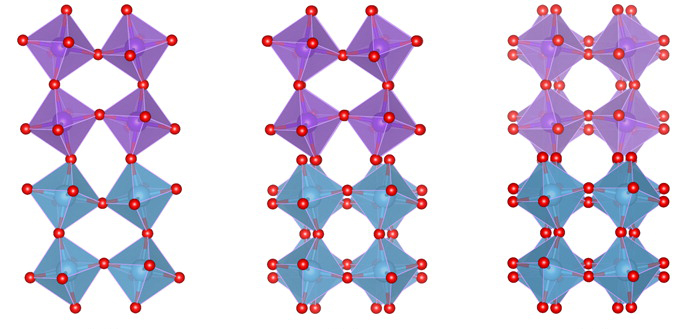If you make ultrathin, atomically flat films of two materials and layer them on top of one another, their interface—within around 10 atomic layers— will often show “emergent” properties: i.e, behavior that neither material exhibits on its own. For example, neither CaRuO3 (a paramagnetic metal) nor CaMnO3 (an antiferromagnetic insulator) is ferromagnetic on its own. However, at the interface between these two materials, a ferromagnetic phase develops.
Understanding how such localized ferromagnetism can be generated and, in particular, how it can be controlled is of fundamental and technological interest, shedding light on the origin of such emergent phenomena and providing a basis for new ultralow-power, ultrahigh-density computing devices.
Researchers used ALS Beamlines 4.0.2 and 6.3.1 to obtain element-specific information about the magnetism and chemical state of the magnetic ions. This was combined this with x-ray diffraction, neutron scattering, magnetometry, and a few other techniques. Overall, the results showed that adjusting the tilts and rotations of oxygen octahedra (repeating structural units in the material) created symmetry mismatches at the interface, enabling the activation and deactivation of magnetism in a region as thin as a single atomic layer.
This important accomplishment in materials engineering represents a new way to control magnetism at the atomic level and will serve as a model for similar studies in other systems. The ability to engineer and tune properties on such small length scales can (eventually) enable us to design exciting new magnetic devices.

Work performed at ALS Beamlines 4.0.2 and 6.3.1.
A.J. Grutter, A. Vailionis, J.A. Borchers, B.J. Kirby, C.L. Flint, C. He, E. Arenholz, and Y. Suzuki, “Interfacial Symmetry Control of Emergent Ferromagnetism at the Nanoscale,” Nano Letters 16, 5647 (2016).